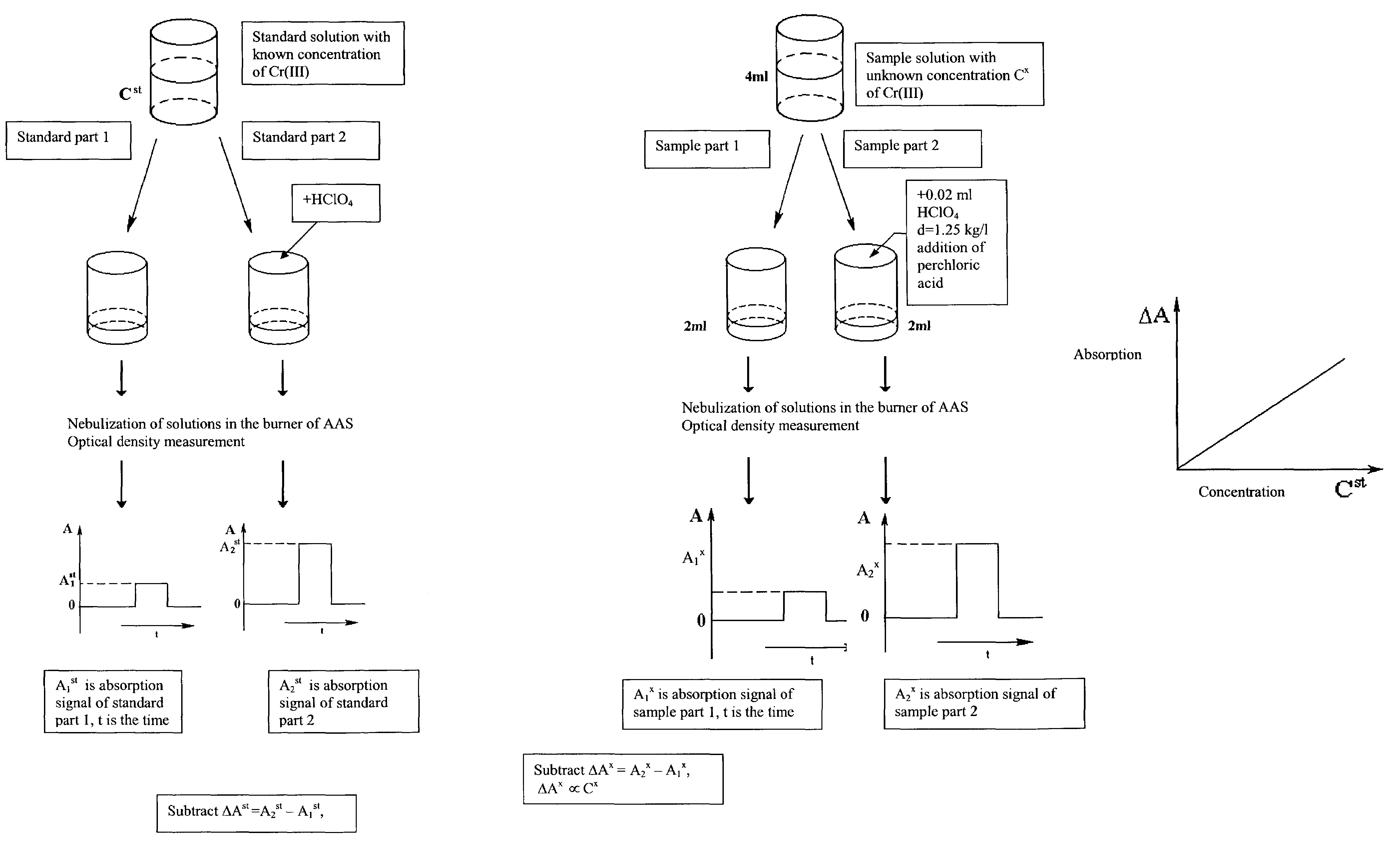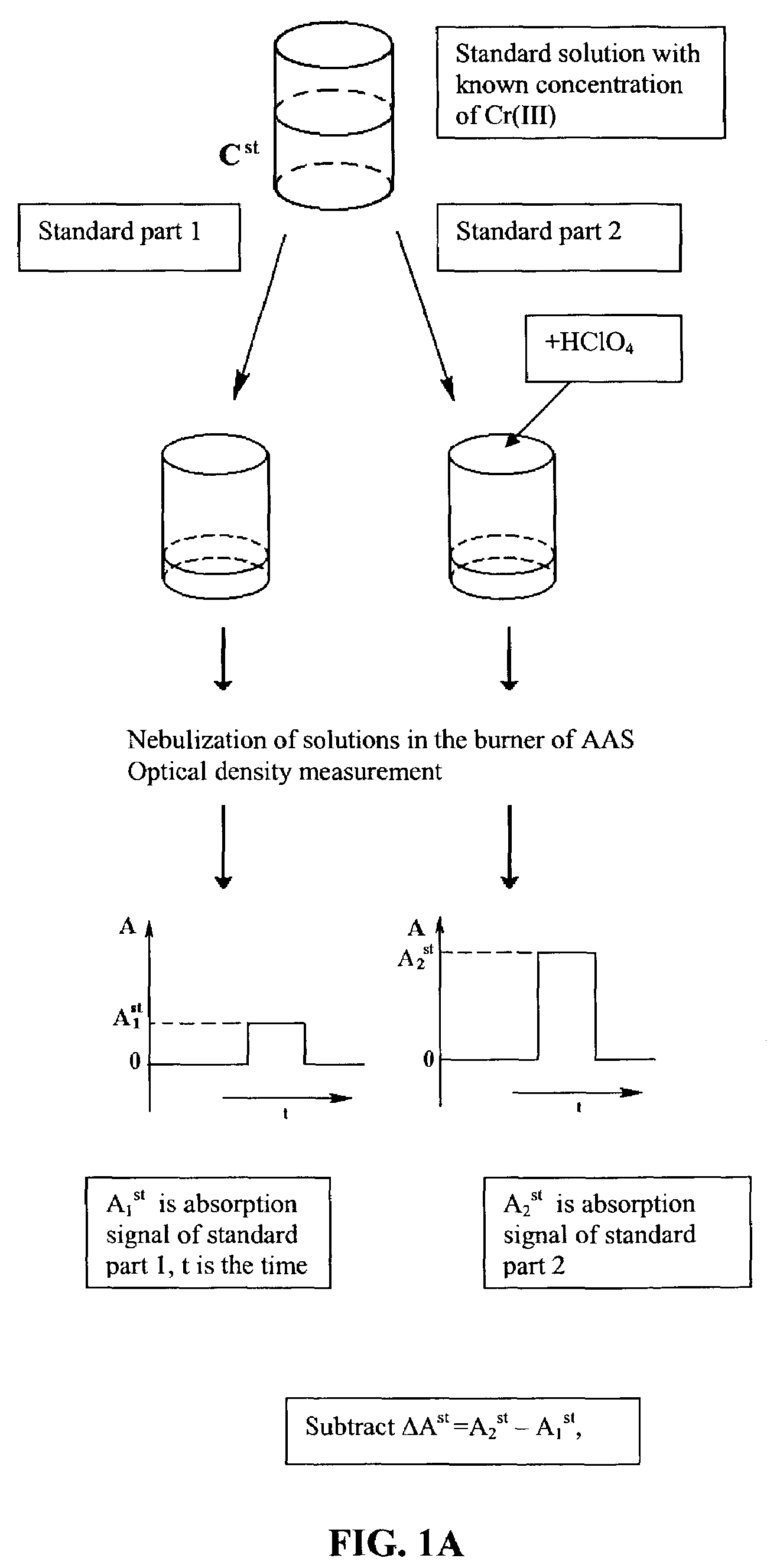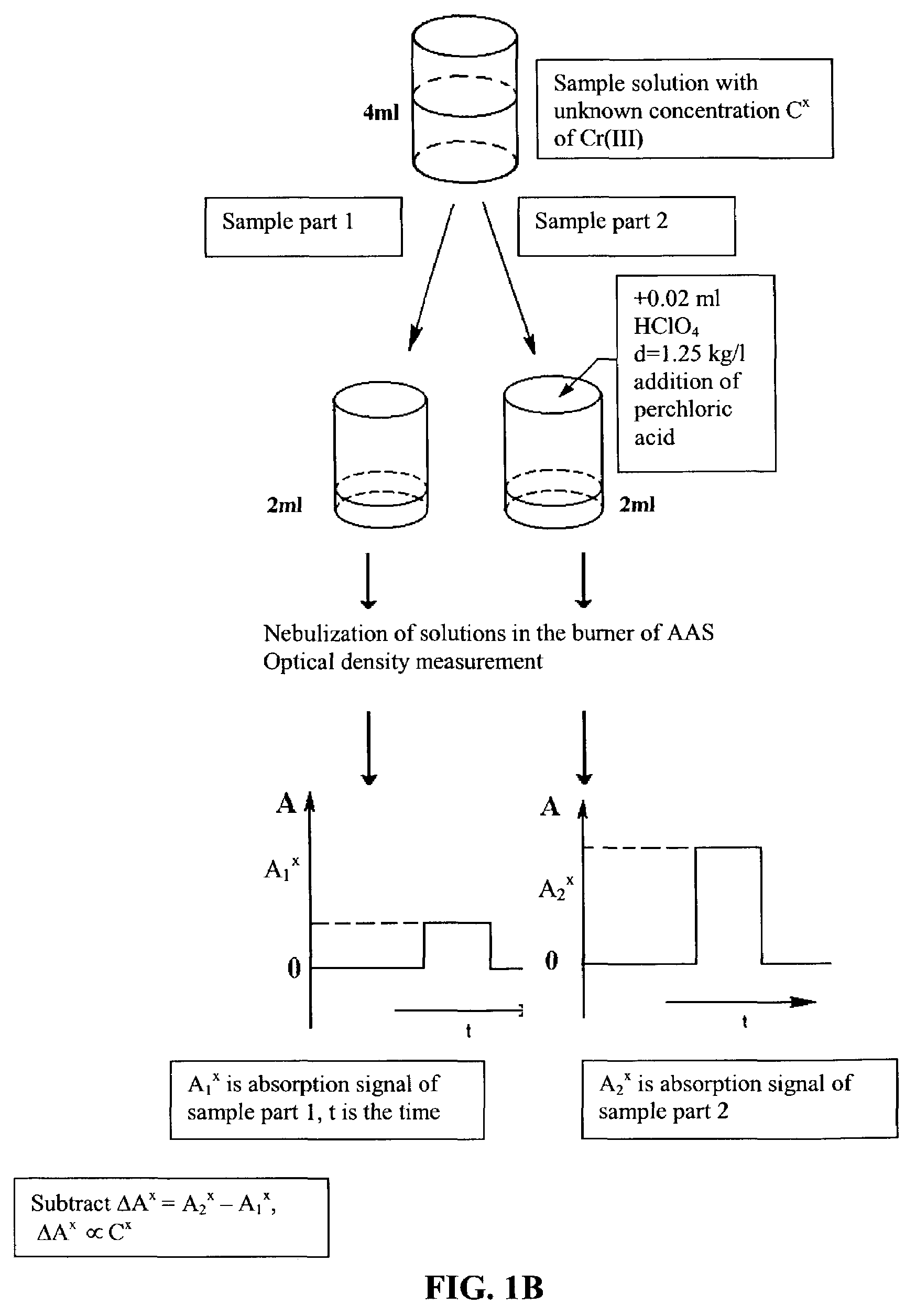Method of trivalent chromium concentration determination by atomic spectrometry
a chromium concentration and atomic spectrometry technology, applied in the field of trivalent chromium concentration determination by atomic spectrometry, can solve the problems of insufficient routine analysis, hexavalent chromium cr(vi) presents the possibility of toxic effects on biological systems, and the efforts to determine trace metals directly and reliably by faas are usually limited, so as to increase the atomic chromium spectrometric signal, increase the absorption signal and fluorescence signal
- Summary
- Abstract
- Description
- Claims
- Application Information
AI Technical Summary
Benefits of technology
Problems solved by technology
Method used
Image
Examples
example 1
FAAS
[0032]Nitric acid and then distilled water were added to dry bacterial samples. The volume of each sample was 6 ml. Each sample was divided into two equal parts. 100 μl of distilled water were added to one part. 100 μl of perchloric acid (solution density=1.25 kg / l, 35% solution, 4.35 molarity) were added to the second part. The two parts were each nebulized, flame (propane-butane-air) desolvated, volatilized and atomized; and the respective atomic absorbance signals measured at 357.9 nm using a Beckman 495 atomic absorption spectrometer, with a hollow cathode lamp (LCP-1, Russia) as the light source. A calibration standard was developed using Cr(III) concentrations of 3.2 μg / ml, 6.4 μg / ml, 12.8 μg / ml, and 25.6 μg / ml. The sample Cr(III) concentrations were determined by taking the difference of A2−A1, where A1 and A2 were the values of atomic absorbance signals for the two parts, and compared to the measured difference for the calibration standard. Measured sample concentrations...
example 2
FAES
[0033]Nitric acid and then distilled water are added to a dry bacterial sample. The volume of sample is 6 ml. This sample is divided into two equal parts. 100 μl of distilled water is added to one part. 100 μl of perchloric acid (solution density=1.25 kg / l, 35% solution, 4.35 molarity) is added to the second part. The two parts are each nebulized; flame (propane-butane-air) desolvated, volatilized, atomized, and the chromium atoms excited to a higher energy state; and the respective atomic emittance signals measured at 357.9 nm. A calibration standard is developed using various known Cr(III) concentrations. The sample Cr(III) concentration is determined by taking the difference of E2−E1, where E1 and E2 are the values of atomic emittance signals for the two parts and comparing to the measured difference for the calibration standard.
example 3
FAFS
[0034]Nitric acid and then distilled water were added to dry bacterial samples. The volume of each sample was 6 ml. Each sample was divided into two equal parts. 100 μl of distilled water were added to one part. 1001 μl of perchloric acid (solution density=1.25 kg / l, 35% solution, 4.35 molarity) were added to the second part. The two parts were each nebulized; and flame (propane-butane-air) desolvated, volatilized, atomized. The chromium atoms were excited to a higher energy state by absorption of photons from a hollow cathode lamp (LCP-1, Russia; modulated at frequency of 350 Hz), and the respective atomic fluorescence signals measured at 357.9 nm. A photo multiplier (FEU 71, Russia) was used as a photoreceiver. An electric signal from the photoreceiver was passed to the multiplier and then to the synchronous detector (SD 9, Russia). A calibration standard was developed using Cr(III) concentrations of 6.4 μg / ml, 12.8 μg / ml, 25.6 μg / ml and 51.2 μg / ml. Sample Cr(III) concentratio...
PUM
| Property | Measurement | Unit |
|---|---|---|
| wavelength | aaaaa | aaaaa |
| wavelength | aaaaa | aaaaa |
| wavelengths | aaaaa | aaaaa |
Abstract
Description
Claims
Application Information
 Login to View More
Login to View More - R&D
- Intellectual Property
- Life Sciences
- Materials
- Tech Scout
- Unparalleled Data Quality
- Higher Quality Content
- 60% Fewer Hallucinations
Browse by: Latest US Patents, China's latest patents, Technical Efficacy Thesaurus, Application Domain, Technology Topic, Popular Technical Reports.
© 2025 PatSnap. All rights reserved.Legal|Privacy policy|Modern Slavery Act Transparency Statement|Sitemap|About US| Contact US: help@patsnap.com



